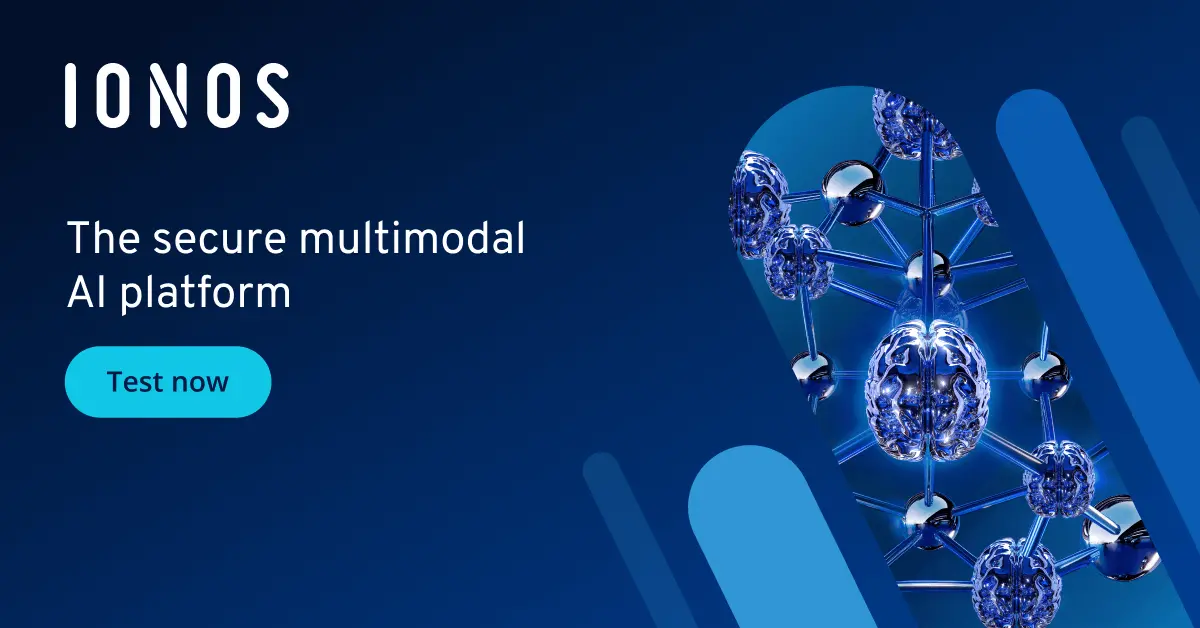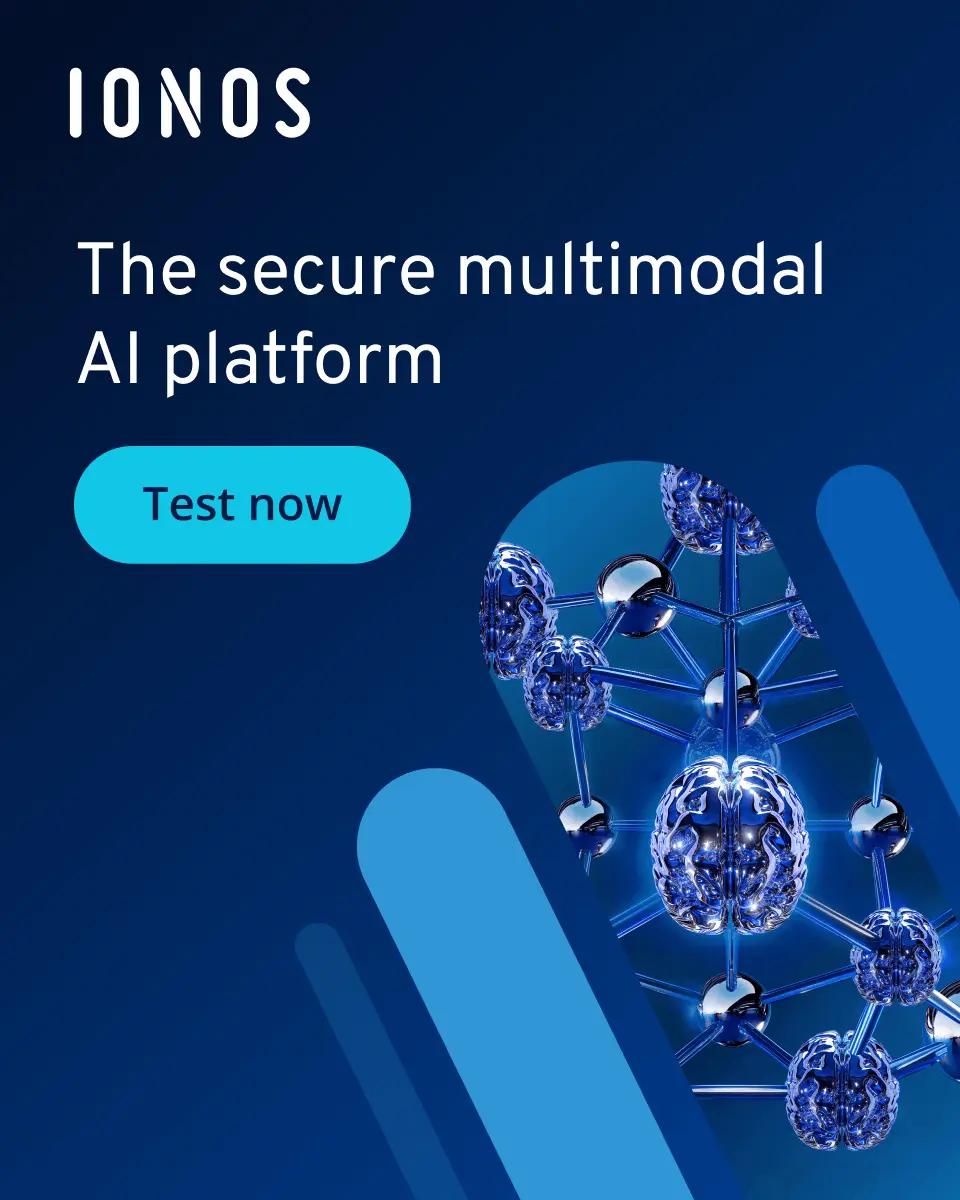How to use AI chatbots for your website?
An AI chatbot is an automated program that uses artificial intelligence (AI) to communicate with users and process their requests. AI chatbots on websites simulate human interactions and can simplify support work.
What is an AI chatbot?
An AI chatbot is software that engages with website visitors through text or voice, utilising natural language processing (NLP). NLP uses machine learning algorithms to comprehend human language and respond accordingly.
Although chatbots in online marketing are not new, AI-powered chatbots on websites offer advanced features compared to non-AI bots. For instance, they can replace FAQ sections by delivering precise answers to user queries. Leveraging machine learning and user data analysis, AI chatbots continuously enhance their interaction capabilities and provide personalised responses.
How do AI chatbots work?
The foundation of an effective AI chatbot is its ability to understand and respond to natural language using natural language processing (NLP). In simple terms, the way it works can be summarised in four steps:
- User input: The user asks a question or makes a request.
- Analysis of the input: The chatbot processes this input through NLP to understand the context and intent of the user input.
- Generate response: Based on what the bot has understood, it generates a response or triggers a predefined action. Additional information may be obtained from external services via APIs.
- Output to the user: The generated response is sent to the user.
Advanced AI chatbots based on machine learning models such as GPT (Generative Pre-trained Transformer) can learn from existing data and improve their responses over time, enabling continuous optimisation of the user experience.
- Get online faster with AI tools
- Fast-track growth with AI marketing
- Save time, maximise results
Advantages and disadvantages of AI chatbots for websites
The suitability of an AI chatbot for a website depends on its intended use and individual circumstances. Like any technology, AI chatbots come with both advantages and disadvantages.
Advantages
✓ 24/7 availability: AI chatbots are always accessible, allowing businesses to address customer queries at any time.
✓ Scalability: Chatbots can seamlessly manage a growing volume of requests, making them ideal for busy websites or during seasonal surges.
✓ Cost efficiency: Unlike human support agents, chatbots offer a cost-effective solution by handling numerous requests simultaneously, eliminating the need for additional staff.
✓ Personalisation: Thanks to AI, chatbots can be employed as part of dialogue marketing to provide personalised responses based on users’ preferences and behaviour, which in turn, improves the user experience.
✓ Data analysis: Chatbots can collect and analyse user data, offering valuable insights into customer behaviour and needs.
Disadvantages
✗ Difficulties with complex requests: While chatbots are able to handle simple queries effectively, they often struggle with more complex or nuanced requests.
✗ Lack of empathy: AI chatbots cannot replicate human empathy or the sensitivity that certain situations call for.
✗ Customisation effort: It can be time-consuming for companies to adapt a chatbot to the specific requirements of the website and continuously optimise it accordingly.
✗ Data protection concerns: The processing of sensitive user data can pose legal challenges, especially with regard to various data privacy laws in different states across the country as well as internationally with regulations such as the GDPR.
When is an AI chatbot on a website useful?
An AI chatbot can be used in various ways on a website. Bots are very frequently used in customer support. Companies with a high volume of support requests benefit from automation through chatbots. They can quickly answer simple questions such as ‘Where is my order?’ or ‘How can I return a product?’.
AI chatbots are also valuable for lead generation acting as the initial point of contact for potential customers. They collect information and guide users through the sales funnel. In the eCommerce sector, AI chatbots can recommend products, answer questions about size or availability, and assist with the checkout process.
Additionally, online AI chatbots can improve content navigation on websites. On larger sites, they help users quickly locate the information they need and navigate pages with ease.
Where are AI chatbots already being used?
AI chatbots have become an integral part of many industries and companies, particularly in support and customer relationship management strategies. Chatbots are frequently used on websites in the following areas:
- Banks: Banks such as NatWest use chatbots to answer frequently asked questions and facilitate simple banking transactions.
- Mobile industry: Network providers such as Verizon use chatbots to answer questions about mobile phone contracts or to conclude new contracts online.
- Travel industry: Airlines such as British Airways offer chatbots to help customers with bookings and delays or to search for flights.
- Healthcare: In medicine, chatbots help to analyse symptoms and provide medical information. One example is the bot Ada Health, which offers simple diagnostic information.
How are AI chatbots integrated into a website?
The integration of an AI chatbot on a website is relatively simple, especially if ready-made solutions such as Tidio or Chatbot are used. Most chatbots offer plugins or easy-to-integrate JavaScript snippets for common website platforms such as WordPress, Shopify or Wix.
The exact process of integrating an AI chatbot depends on the provider you choose. Generally, you first register as a user on the chosen platform. Once registered, you will typically receive a code that can be integrated directly into your website. The bot may also need to be configured to ensure optimal performance.
- Intuitive website builder with AI assistance
- Create captivating images and texts in seconds
- Domain, SSL and email included

